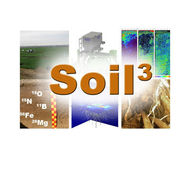Fast agricultural topsoil re-formation after complete topsoil loss – Evidence from a unique historical field experiment (2023.0)
Burger D., Bauke S., Amelung W., Sommer M.
Geoderma, 434 (), 116492
doi:10.1016/j.geoderma.2023.116492
Abstract
Erosion of fertile topsoil means severe land degradation and yield loss. Here, we show that reformation of the fertile topsoil and crop yield increase is possible by good agricultural management within a few decades. Evidence relies on a unique long-term field experiment in NE Germany, where in 1964 the sandy soil (Luvisol) had been excavated to 52 cm and refilled with subsoil material of 52 cm thickness. Undisturbed trials served as controls, these were all combined with either no fertilisation, mineral fertilisation or a combined mineral and organic fertilisation. It took only 26 years until new topsoil had been formed. Its soil organic carbon (SOC) and total N stocks and the aggregate size distributions equalled that of the other treatments; SOC sequestration corresponded to 28 Mg SOC ha−1. The former topsoil buried below the plough layer lost 30–50 percent of its SOC during 5 decades in a non-linear manner. We conclude that our current agricultural tools can restore degraded arable land rather fast and contribute to climate change mitigation through a significant SOC sequestration as well.
